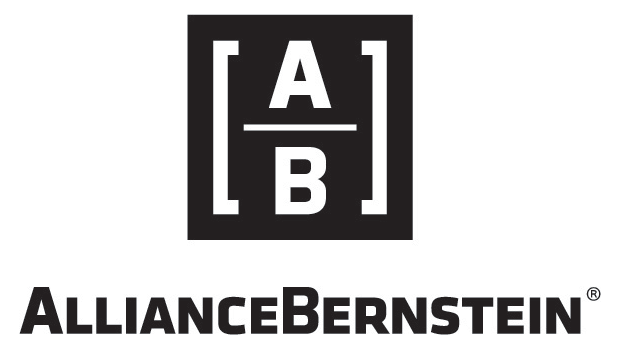The US Inflation Reduction Act (IRA), signed into law on August 16, 2022, includes a substantial spending allocation to promote the development of clean energy, which will likely be a big boost for both this market and investment opportunities. Two of AB’s investment experts share their initial thoughts on this landmark legislation.
What’s the potential impact of the clean-energy spending in the IRA relative to past efforts to jump-start this sector? What makes this time different?
Jody Gunderson, Managing Principal and Investment Committee Member, AB CarVal Investors: Given the certainty it provides to developers of clean-energy projects and technologies, it will accelerate the transition. It enables innovation to take place in the US, as manufacturing elements come back onshore. In terms of the expected reduction in greenhouse gases, we’ve seen that the IRA may be 10 times more positive for climate impact than any previous legislation.
The legislation is also all-encompassing of technologies. It addresses the traditional renewable space and new technologies that must scale up and become cheaper over time: green hydrogen, sustainable aviation fuels and biofuels. The comprehensive nature of the IRA makes it very different from prior legislation we’ve seen.
The legislation will likely move the US into more of a leading role in the transition. Some IRA provisions around manufacturing and onshoring are designed to better control the supply chain, reduce clean-energy cost and foster manufacturing innovation. Some of the tax credits and financial support available in the US will extend to mineral extraction, manufacturing and production outside the US by its free-trade-agreement partners, so the IRA’s impact will reach beyond US borders.
Jet Theriac, Chief Investment Officer of 2050 CleanTech Solutions, AB: A sector with roughly $1 trillion in market capitalization, broadly defined, will see an influx of almost $500 billion in granted value. Until now, US policy has been shaped in two- to three-year increments, with uncertainty about the extension of investment tax credits. The IRA credits are much longer-lasting than anything seen in the US before, bringing stability at a time when wind and solar power are already winning nearly every request for proposal.
The IRA is also a huge boost for nascent technologies like hydrogen and renewable natural gas. Let’s say a renewable natural gas company is building a $100 million digester. The firm can obtain $30 million in renewable tax credits once it breaks ground, sell them for cash to fund the equity portion, then finance the rest. It makes financing much more obtainable.
The IRA has a much longer-term focus than previous clean-energy tax incentives. How important is this aspect, and what does it mean for the type of investors and capital sources it will bring to the sector?
Jody Gunderson: Historically, from time to time, there have been short extensions on tax credits. However, the extensions were so unpredictable that developers couldn’t get any certainty on whether they would happen, how much they would be or how long they would last.
With the IRA, credits run at least until 2032 or longer. That long runway adds a lot of certainty for both developers and investors, which they need in order to make good, solid decisions. The reality is that many of these projects take a long time to develop—years, in fact. Having much more visibility into the out years is incredibly important.
To date, much of the investment activity in the clean-energy transition has taken place in private capital markets. As these sectors scale up, and with the tailwinds of the IRA, we can reasonably expect that more of that funding activity will take place in the public markets.
Jet Theriac: Under the IRA, some credits range up to 20 years; hydrogen, wind and solar production tax credits, for example, last through 2042. These attributes will give some companies newfound access to the public debt markets. From a credit perspective, we think it will help some nascent firms—you’re essentially de-risking 30% of the project expenditure with cash up front from selling credits.
By adding stability to the space, the IRA reduces the capital intensity of these projects and expands the unit economics; often, these companies are growing margins as a function of the credits. We think that will interest a broad swath of investors from areas such as the traditional industrial spaces and even technology. Green tech has always been a bit of a crossover space.
How transformative and impactful is the IRA in improving the credit quality and viability of early-stage clean-energy firms?
Jody Gunderson: All else equal, the IRA might improve the prospects for early-stage firms. But many things drive the success of early-stage firms: management strength, the ability to navigate fast-changing markets and evolving dynamics, managing an expense structure before there are meaningful revenues—and, of course, the ability to attract talent and capital.
For an early-stage company, the act would be one piece of the puzzle. But in terms of sizing up the prospects for an early-stage firm, it’s probably a reasonably small piece in the grand scheme of things. It really comes down to how effectively an individual business can execute.
Jet Theriac: For firms that don’t necessarily have the balance sheet, being able to monetize the investment tax credit up front is big. It’s worked with solar companies that have monetized credits through tax equity financing, enabling cash-strapped firms to better finance projects and growth. Now, a lot of nascent technologies—stationary storage applications, for example—have access to that credit.
For these firms, being able to completely fund the equity portion of a project and then find debt funding where, in all likelihood, they couldn’t before is a big boost. Some of the enhancing credits themselves also help shape the economics of a project, likely expanding margins and putting them in a better financial position to grow. But investors need to identify the right firms.
It’s early days, but how should investors approach assessing opportunities and risks under the IRA? Are certain sectors poised to accelerate more rapidly, or could some be disadvantaged?
Jody Gunderson: We think stand-alone battery energy storage systems will benefit. Before the IRA, only systems that were co-located with a renewables project were eligible for tax credits; the act adds a tax credit for stand-alone battery storage. Many more projects are likely to be economically viable now. The legislation will also likely accelerate battery storage in the US. The growth in renewables and intermittency of power make battery storage critical in stabilizing the grid.
Hydrogen is also largely seen as a winner and may be the biggest beneficiary of the other technologies. The cost of producing green hydrogen is expected to fall dramatically by 2030. In terms of segments that may be disadvantaged, the IRA generally reinforces trends already under way, accelerating the transition from oil and gas to electric throughout the economy.
Jet Theriac: From the top down, it makes sense to start with the question of what the largest credit type is pound for pound. The hydrogen credit is the most generous by far, in our view, followed by the step-up in the 45Q, the credit for carbon sequestration. Going piece by piece through the legislation can help identify areas of the value chain with the most potential for incremental margin growth.
In terms of overall growth potential, hydrogen needs to grow fastest if we’re to achieve decarbonization goals by 2050. There’s about two gigawatts of production now. We’ll need 4,000 by 2050. Hydrogen is also essential in decarbonizing many heavier industrial processes—heavy transport and locomotive, for example. The mining equipment for decarbonizing batteries will need to be hydrogen operated.
In some cases, the IRA will create disadvantages. For example, if you make electric vehicles (EV) that sell for over $55,000 or sports utility vehicles over $80,000, you no longer qualify for the EV tax credit.
What are a few caveats for investors who may be eager to jump into this relative wave of clean-energy investment?
Jody Gunderson: There are so many elements of, for example, supply and demand to consider as an investor. There’s just so much interconnectivity between the sectors and technologies and their relative costs. Also, the value of assets and revenues in this sector is driven in part by the value of commodities, which are volatile.
A lot of change is coming in the clean-energy transition, and change itself presents risk: operational risk, credit risk, market risk. These are long-duration assets, so it’s more challenging to assess the future. It really comes down to whether investors can craft investment profiles that meet their risk/return targets. Stay disciplined and don’t chase the market: the transition will likely be bumpy; progress in a straight line would be surprising.
Jet Theriac: There’s always some risk from political power change that brings in different views on the clean-energy market. However, many legacy oil and gas companies may benefit from the IRA in that they take part in developing clean-energy projects. State-level policy risk exists; the US has developed its carbon policy on a state-by-state basis, so there’s no comprehensive European policy equivalent.
Another factor to monitor is that the federal renewable identification numbers for biofuels are issued by the Environmental Protection Agency (EPA). The core tenets of this policy remain, but the EPA does have leeway to tweak policy, which could impact a credit that’s already fairly volatile.
On the technology side, some are nascent, and economics are still playing out. On an individual company basis, there’s technology risk in any sector. Hydrogen has a few different fuel-cell designs, most dating from the 1950s and 1960s. Investing in certain companies may require relying on one design—that’s an inherent bet on some form of technology and a company’s ability to execute. That’s why the bottom-up research assessment is so critical.
The views expressed herein do not constitute research, investment advice or trade recommendations and do not necessarily represent the views of all AB portfolio-management teams. Views are subject to change over time.
About the Authors
Jet Theriac
Jet Theriac is a Chief Investment Officer for 2050 CleanTech Solutions. Prior to joining AB in 2019, he was founder and CIO of Lanternback Capital, an energy transition-focused hedge fund. Prior to Lanternback, Theriac was managing director of Global Equities at Hutchin Hill Capital, managing a large portfolio spanning energy, industrials and utilities. Prior to Hutchin Hill, he was co-head of Balyasny Asset Management's San Francisco office, overseeing the second largest portfolio at Balyasny. Theriac was one of only two portfolio managers to be named a top ten performer for three consecutive years (2012, 2013 and 2014). He began his career as an investment analyst at George Weiss Associates. Theriac holds a BA, JD and MS from the University of Florida and a MPhil from the University of Cambridge. Location: Miami
Jody Gunderson
Jody Gunderson is a Managing Principal and member of the Investment Committee for AB CarVal, responsible for leading the firm's investment strategy and management, as well as its global loan portfolios and clean energy businesses. In addition, she manages investments in asset-backed securities globally, including residential mortgage-backed securities, commercial mortgage-backed securities and collateralized loan obligations. Prior to joining AB CarVal in 1994, Gunderson was a manager in the financial services practice of PricewaterhouseCoopers, where she served investment fund, commercial banking and thrift clients. She holds a BS in business from the University of Minnesota and is a Certified Public Accountant (inactive). Location: Minneapolis


